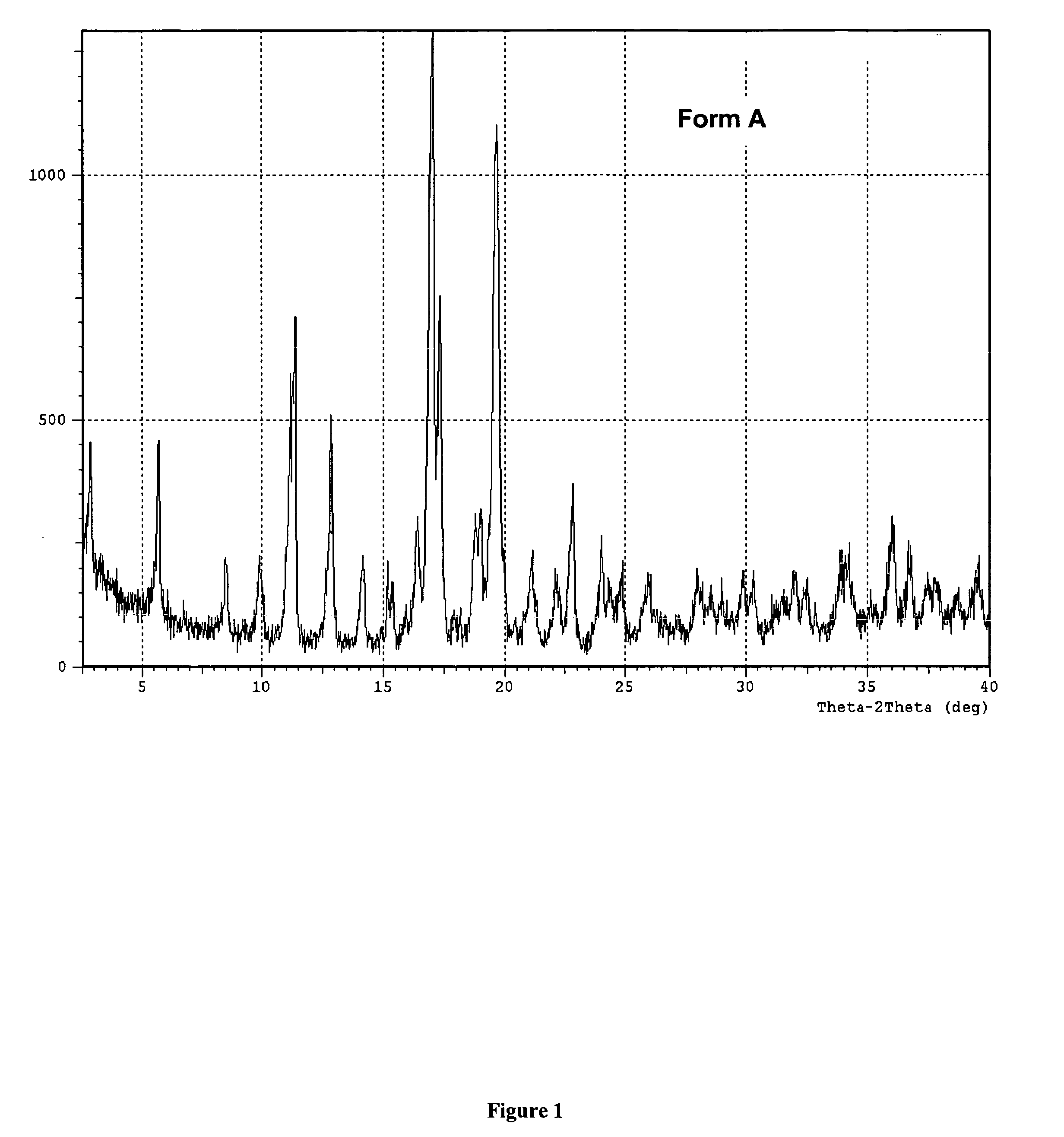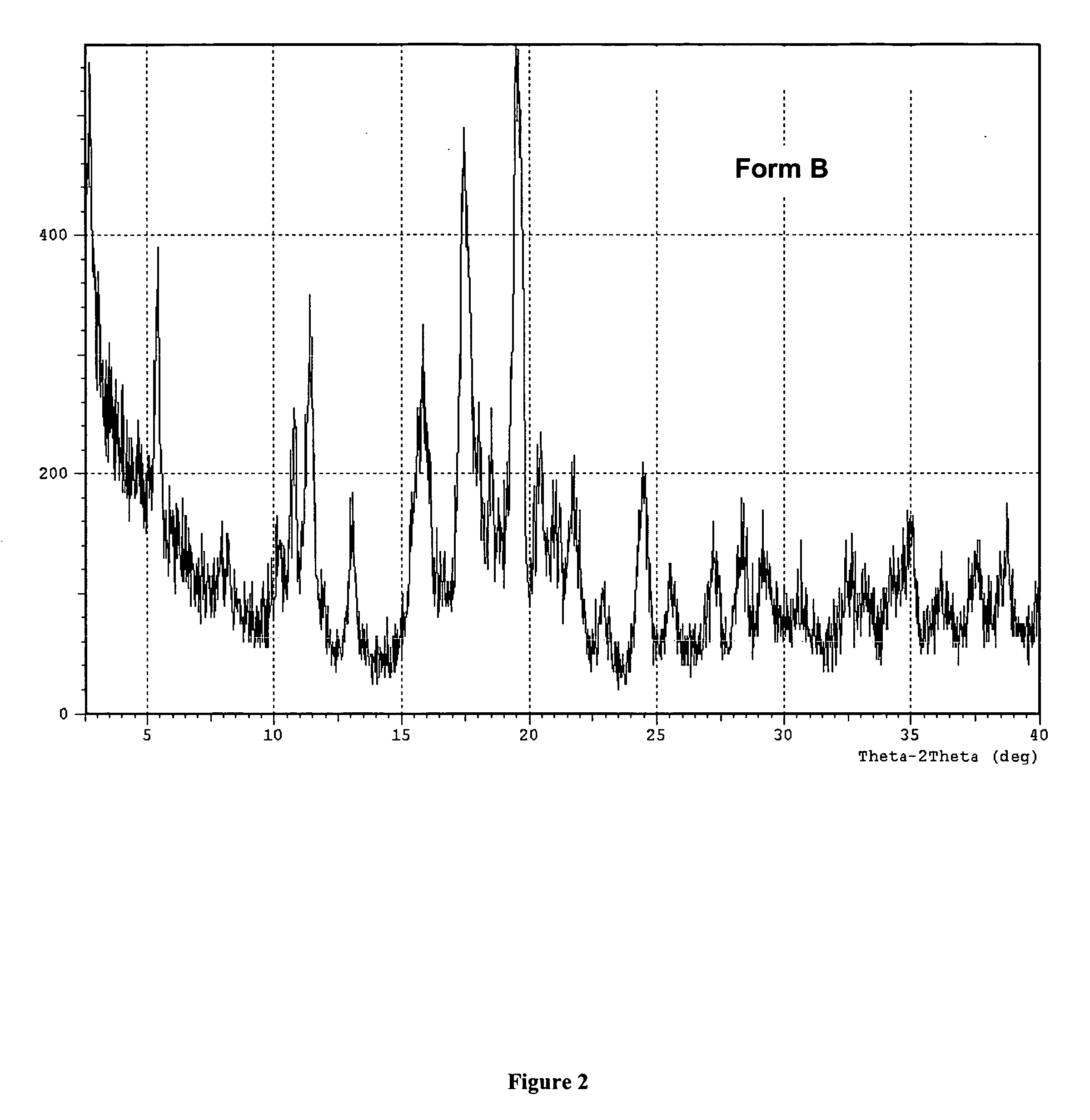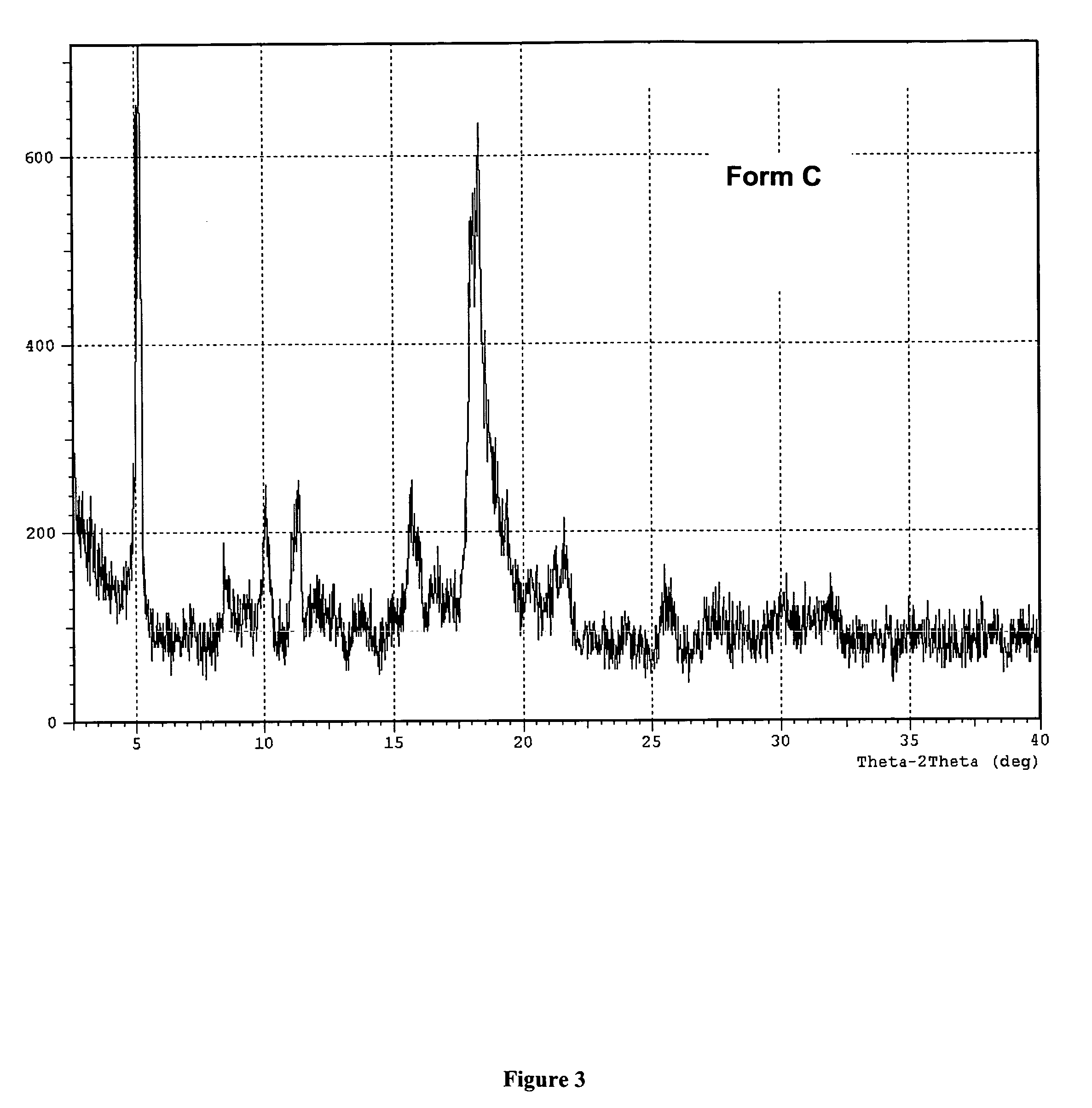Process for preparation of probucol derivatives and polymorphic forms thereof
- Summary
- Abstract
- Description
- Claims
- Application Information
AI Technical Summary
Benefits of technology
Problems solved by technology
Method used
Image
Examples
example 1
Synthesis of Water Soluble Derivatives of Probucol
[0112] In an appropriate vessel, 11 g of potassium tert-butoxide and 50 g probucol are stirred in 225 g N-methylpyrrolidone (NMP) at about 20° C. To this solution is charged 19.6 g ethyl bromoacetate, and the system is stirred for at least one hour. Hydrolysis is accomplished by charging 60 g of 45% potassium hydroxide (KOH) and stirring for at least four hours. The reaction mixture is diluted with 300 mL of water and 60 mL of brine, then extracted at least three times with 150 mL portions of toluene. The washed aqueous NIMIP mixture is charged with 6 mL of 85% aqueous phosphoric acid, then extracted twice with 200 mL portions of toluene. The toluene extracts are washed with 250 g of 2.5% aqueous phosphoric acid, then with 100 g of water. The resultant toluene solution is then successively extracted at least four times with dilute aqueous potassium bicarbonate (1.0-2.5%). Optionally, the toluene solution can be stirred with 60 g of ...
examples 2-15
[0113] Preparation of the Polymorphic Forms of 2-[4-[[1-[3,5-bis(1,1-dimethylethyl hydroxyphenyl]thio]-1-[methylethyl]thio]-2,6-bis(1,1-dimethylethyl)phenoxy] ethanoic acid.
example 2
[0114] A slurry of about 14 kg of crude (amorphous) 2-[4-[[1-[3,5-bis(1,1-dimethylethylhydroxyphenyl]thio]-1-[methylethyl]thio]-2,6-bis(1,1-dimethylethyl)phenoxy] ethanoic acid obtained by the procedure shown in the above Example 1 and 62 kg of heptane is atmospherically distilled to minimum volume, diluted with 21 kg of heptane and again concentrated to minimum volume by distillation. The resulting slurry is diluted with 26 kg heptane, heated to solution at reflux (90-98° C.) for 1-2 hours, cooled to room temperature (20-25° C.) and stirred for approximately one hour. The resulting slurry is filtered and the solid residue washed with 20 kg heptane. After drying under vacuum at 65° C. for about 12 hours, the white solid polymorphic Form A (XRPD) material has a melting point (capillary) of 169° C.
PUM
| Property | Measurement | Unit |
|---|---|---|
| Temperature | aaaaa | aaaaa |
| Temperature | aaaaa | aaaaa |
| Temperature | aaaaa | aaaaa |
Abstract
Description
Claims
Application Information
 Login to View More
Login to View More - R&D
- Intellectual Property
- Life Sciences
- Materials
- Tech Scout
- Unparalleled Data Quality
- Higher Quality Content
- 60% Fewer Hallucinations
Browse by: Latest US Patents, China's latest patents, Technical Efficacy Thesaurus, Application Domain, Technology Topic, Popular Technical Reports.
© 2025 PatSnap. All rights reserved.Legal|Privacy policy|Modern Slavery Act Transparency Statement|Sitemap|About US| Contact US: help@patsnap.com



